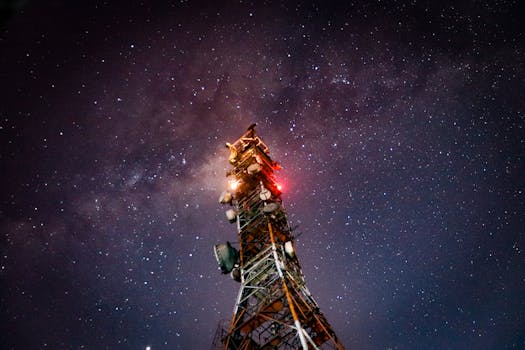
MEO Satellites: Revolutionizing Global Connectivity with Medium Earth Orbit Technology
MEO satellites, or Medium Earth Orbit satellites, are a type of satellite that operates in an orbit between 2,000 and 36,000 kilometers above the Earth’s surface. This orbit is higher than Low Earth Orbit (LEO) satellites but lower than Geostationary Earth Orbit (GEO) satellites. MEO satellites are designed to provide global coverage and are used for a variety of applications, including navigation, communication, and Earth observation.
MEO satellites have several advantages over traditional GEO satellites. They have a shorter signal latency, which means that data can be transmitted faster and with less delay. This makes MEO satellites ideal for applications that require real-time communication, such as video conferencing and online gaming. Additionally, MEO satellites have a wider coverage area than LEO satellites, making them suitable for providing global connectivity.
How MEO Satellites Work
MEO satellites work by transmitting and receiving data to and from Earth stations. They use a network of ground stations to communicate with the satellite, which then relays the data to its final destination. MEO satellites use a variety of frequencies, including Ka-band, Ku-band, and C-band, to transmit data. The choice of frequency depends on the application and the level of interference that is expected.
MEO satellites are typically launched into orbit using a launch vehicle, such as a rocket. Once in orbit, they use their onboard propulsion system to maintain their position and altitude. MEO satellites are designed to operate for many years, with some satellites having a lifespan of up to 15 years or more.
Applications of MEO Satellites
MEO satellites have a wide range of applications, including navigation, communication, and Earth observation. Navigation satellites, such as GPS, use MEO satellites to provide location information to users. Communication satellites, such as those used for mobile phone networks, use MEO satellites to provide global coverage and connectivity. Earth observation satellites, such as those used for weather forecasting and environmental monitoring, use MEO satellites to collect data about the Earth’s surface and atmosphere.
MEO satellites are also used for a variety of other applications, including satellite radio, satellite TV, and broadband internet. They are also used for military and government applications, such as secure communication and surveillance.
Benefits of MEO Satellites
MEO satellites have several benefits, including faster data transmission, wider coverage, and lower latency. They are also more resistant to interference and have a higher level of security than traditional GEO satellites. Additionally, MEO satellites are more cost-effective than launching multiple LEO satellites to achieve the same level of coverage.
MEO satellites are also more flexible than traditional GEO satellites, as they can be easily reconfigured to change their coverage area or to add new services. This makes them ideal for applications that require a high level of flexibility and adaptability.
In conclusion, MEO satellites are a type of satellite that operates in an orbit between 2,000 and 36,000 kilometers above the Earth’s surface. They have several advantages over traditional GEO satellites, including faster data transmission, wider coverage, and lower latency. MEO satellites have a wide range of applications, including navigation, communication, and Earth observation, and are used for a variety of other applications, including satellite radio, satellite TV, and broadband internet.






